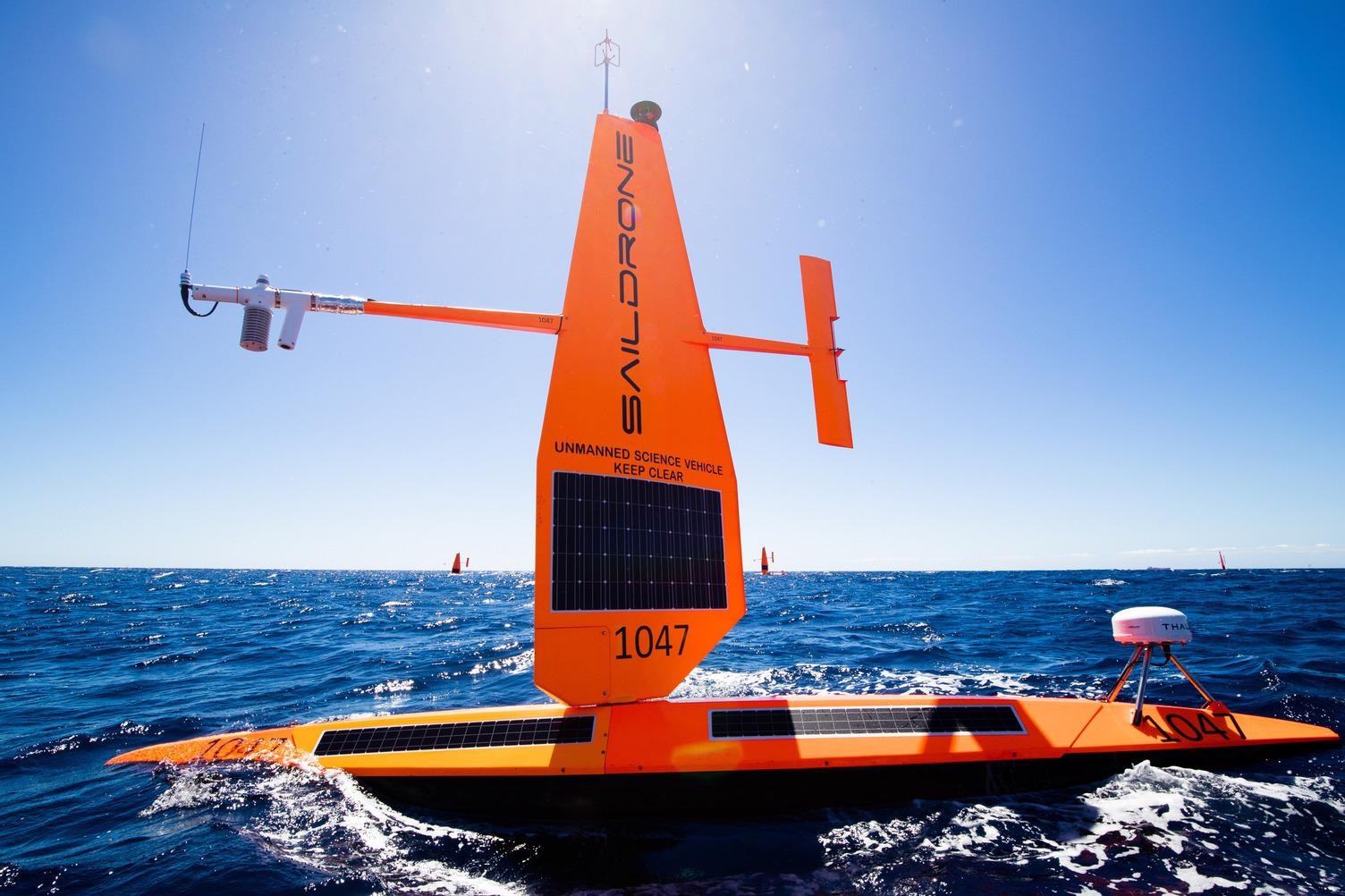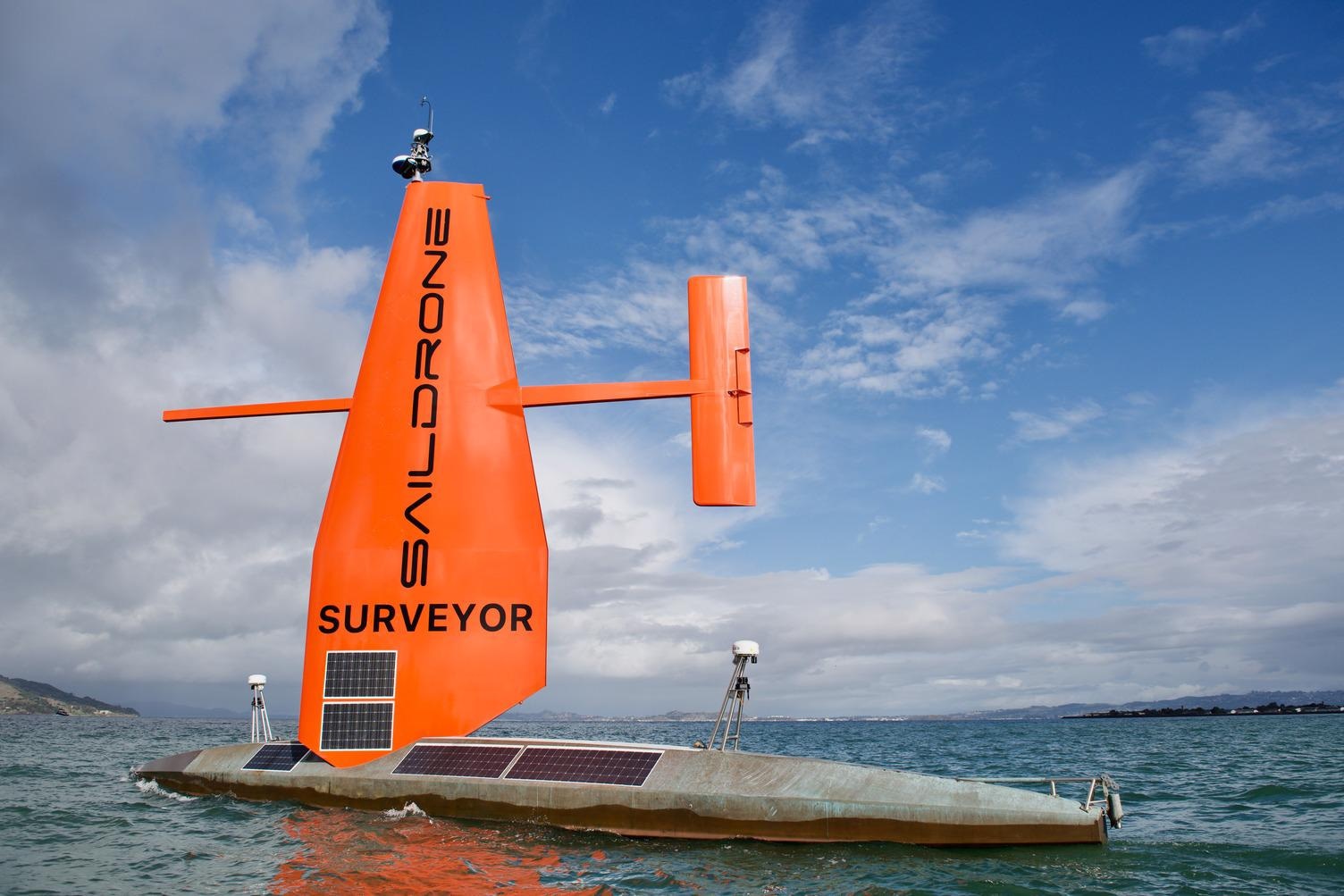Saildrone's unmanned surface vehicles (USV) are dominating the maritime industry, providing unmatched levels of ocean data across the globe. In this interview, we dive deeper into Saildrone's fleet, discuss the role sustainability plays in their solutions, and highlight the key sectors where USVs can make a difference.
Please could you introduce yourself and your role at Saildrone?
My name is Susan Ryan and I am the VP of Marketing at Saildrone. My job is to increase awareness of Saildrone’s incredible capabilities and data services.
What are the primary aims of Saildrone, and what solutions do you provide?
Saildrone provides comprehensive turnkey data solutions for maritime security, ocean mapping, and ocean data.
Data is collected by Saildrone’s fleet of wind and solar-powered uncrewed surface vehicles, designed to make ocean intelligence cost-effective at scale.

© Saildrone
At the core of Saildrone’s approach is its effort to create climate-friendly systems. Why should businesses factor sustainability into their product design, and what benefits can a carbon-conscious approach bring?
We, as a global community, have a moral imperative to future-proofing new technology through sustainable design.
Fortunately, at Saildrone, our organizational climate objectives are perfectly aligned with our business objectives. Saildrone’s goal is to create climate-friendly systems and harness renewable wind and solar energy. This is what makes the Saildrone platform so successful, allowing the vehicles to stay at sea for months on end, providing persistent data collection from the most remote areas of the ocean.
Saildrone offers three autonomous vehicles, Explorer, Voyager and Surveyor. What are the key differences between these products and how do they work?
The biggest difference between Saildrone’s three platforms is size: The Explorer, which was the first vehicle developed, is 23 feet long. Solar panels on the wing and hull combined with a hydrogenator on the trailing edge of the keel provide the power necessary to support a payload of science sensors, collecting approximately 20 individual metrics at a 1-second resolution.
The Surveyor class is 72-feet long. The larger size is necessary to power its multibeam sonar systems used for collecting International Hydrographic Organization-compliant mapping data.
At 33 feet, the Voyager is optimized for maritime security with a 360° camera at the top of the wing for maximum detection range, radar, passive acoustics, and a highly efficient hybrid propeller to assist propulsion.

© Saildrone
Coverage of autonomous vehicles tends to be of unmanned drones or driverless cars. What are the main barriers that limit the implementation of autonomous systems in the maritime industry, and how might they be overcome?
Ocean weather conditions range from low-wind and strong currents to low-solar and sea ice to tropical cyclones with winds above 150 mph. Engineering an autonomous system that can accommodate that range of conditions, plus the challenges of a saltwater environment and a productive marine ecosystem while often operating hundreds if not thousands of miles from shore, is significantly more challenging than designing land-based autonomous systems.
Developing efficient, high-density renewable energy systems is a significant step toward mitigating climate change. How do Saildrone USVs help support offshore wind farms, and how might this help boost the reliance on renewable energy like wind power in the future?
Offshore wind farms require a large amount and variety of data throughout their life cycle. Once a site is identified for wind farm development, extensive data must be collected about the movement of water (levels and flows, sea states, waves), wind conditions, and other atmospheric and oceanographic metrics.
Wind farm developers also require a detailed understanding of the ocean floor and continuous surveying for topographical shifts due to sediment redistribution by ocean currents. Once a site is operational, continuous monitoring is required to address vandalism and sabotage.
Saildrone supports the entire life cycle of an offshore wind farm. Saildrone’s three classes of autonomous vehicles work together to autonomously collect data throughout the life cycle of the wind farm.
Each vehicle is designed for specific tasks and can be deployed from any dock, with no permits required. Their innovative design efficiently delivers the critical data needed, from comprehensive real-time metocean data, including wind monitoring to high-resolution ocean mapping, persistent year-round ecosystem monitoring, and maritime security solutions.
In September 2021, Saildrone released a video showing one of its vehicles sailing into the heart of a category four hurricane.
2021 Atlantic Hurricane Mission: 24 Hours in Hurricane Sam
2021 Atlantic Hurricane Mission: 24 Hours in Hurricane Sam. © Saildrone
Extreme weather events can have devastating consequences, and it can be difficult to map their behavior due to the dangers of close contact investigations. How can the data Saildrone collects from these weather systems be used to design mitigation strategies for dangerous weather?
The biggest challenge to hurricane forecasting is rapid intensification, which can have a huge impact if a storm intensifies before landfall. To understand how these large and destructive storms grow and intensify, scientists need to collect data about the surface fluxes—the exchanges of energy between the ocean and the atmosphere in the forms of heat and momentum—before, during, and after tropical cyclones.
Saildrone vehicles are the only uncrewed vehicles capable of sailing into a hurricane and collecting data above and below the sea surface. Scientists can use this data to improve hurricane intensity forecasting, giving coastal communities more time to prepare.
Increasing our knowledge of the ocean can impact a range of sectors. In your opinion, what areas of industry would benefit the most from Saildrone’s products?
Saildrone’s capabilities can provide benefits to many industry sectors. An increased understanding of what happens on the ocean, or maritime domain awareness, delivers massive benefits for countries worldwide, especially those battling illegal marine activities like unregulated, reported, and illegal fishing—which has a global cost of over $36.4 billion per year.
In addition, the World Bank estimates the value of global fisheries and aquaculture to be over $400B, and sustainable fisheries management requires annual fish stock surveys, which Saildrone has already performed in the Arctic, along the US West Coast, and the North Sea.
As stated above, Saildrone also supports the expansion of offshore renewable energy generation leveraging data from all three platforms, as well as subsea cable survey development and offshore oil and gas.
What do the next ten years look like for Saildrone? Are there any developments you are striving towards?
Saildrone is poised for rapid growth with a massive expansion of data collection throughout the world’s oceans. We are working toward building 20 Surveyors to significantly contribute to the Seabed 2030 goal of mapping the world’s oceans in high resolution by 2030.
The Voyager fleet will be operationalized to achieve maritime security objectives, including illegal fishing, drug interdiction, and protecting marine protected areas. And the Explorer fleet will continue to provide critical data from the Arctic to the Antarctic to achieve research objectives ranging from carbon and climate science to ecosystem monitoring and satellite calibration.
Where can our readers go to stay up to date with Saildrone?
The Saildrone website, saildrone.com, offers regular blog stories about our data collection missions and technology developments, and you can also follow us on social media, including Facebook, Instagram, Twitter, and LinkedIn.
About Susan Ryan
 Susan is fascinated with leading-edge technology and worked for The Boeing Company for many years in industries from global services to space to autonomous air vehicles before joining Saildrone.
Susan is fascinated with leading-edge technology and worked for The Boeing Company for many years in industries from global services to space to autonomous air vehicles before joining Saildrone.
Now at Saildrone, Susan remains at the cutting-edge of technology while helping the company protect the earth and our environment.
Saildrone has world-leading capabilities, both with its suite of Saildrone vehicles and with its turnkey data and machine learning services, which help customers understand the vast amounts of data available from our persistent platforms.
Working for a company that can provide this level of service and insights, helping our customers leverage the maritime domain in a way that is sustainable and environmentally friendly, is definitely a career highlight for her.
So little is known about our vast oceans, and she believes it is exciting to work with a team on the frontiers of discovery in this area. As Vice President of Marketing, Susan really enjoys increasing awareness of Saildrone’s incredible capabilities and how the world can benefit from better understanding and protecting our oceans.
Disclaimer: The views expressed here are those of the interviewee and do not necessarily represent the views of AZoM.com Limited (T/A) AZoNetwork, the owner and operator of this website. This disclaimer forms part of the Terms and Conditions of use of this website.